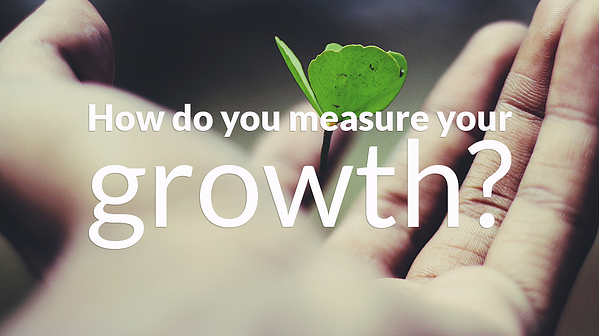There are many reasons why educators must be continual lifelong learners and strive to learn new skills. The pace of change within our society and schools makes it a moral imperative that educators learn best practices and researched based methods to help students and staff find success. A part of this learning process is growing yourself as a leader. This requires a great focus, work ethic and passion to improve while making mistakes. I have learned so much about this process from other school leaders and our students. An area that I have spent much time reflecting on over the years is developing a better understanding of how to “measure your own growth” as a school leader.
Measuring growth is a complex process but is a necessity for school leaders. If we are not growing within our roles as a leader, then our work loses its impact and we are not moving our schools forward. As David Geurin shares a reflective question, “Is your school a time machine or a time capsule?” This same type of thought process can be used with leaders and how we either develop over time or stay stagnant. Here are the methods I use to help measure my growth over time:
- Impact of others as leaders – How leaders develop and grow leaders within their school community is a significant task but also how schools develop over time. If leaders can reflect and see growth in others, then they are becoming more impactful in their work as they are influencing others.
- Get authentic feedback from stakeholders regarding the work – Too often leaders may feel as if they are making an impact and improving as a leader. While that may be true, unless we ask the hard questions to our students, staff and parents that we serve then we truly do not know the answer. Leaders recognize the importance of sitting down and having 1:1 conversations with staff where you listen to staff concerns and ideas. This similar type of feedback loop can be used with student “feedback loops” and parent surveys or “Coffee with the Principals”. When others see positive change as a result of your leadership, then you know you are growing within your role.

- Focus on being student driven – Leaders have many thoughts or ideas on how to improve their school, but it is vital that we reflect and recognize “the ideas we implement are more important than the ideas we collect” . These ideas should be student driven – simply meaning developed with students, for students and led by students.
- Willingness to learn, take risks and fail – Leaders “must be comfortable with being uncomfortable” – that phrase resonates with me and helps to push my thought processes and continually seek new ways to engage our staff, students and parents.
- Remove your blind spots – Getting feedback is essential for many reasons and one of the areas it helps is to remove the blind spots within your own judgments that may exist unless you get input from others. If we are able to see our mistakes or blindspots, then we are able to adjust and move the school forward at a much more effective pace.
- Be Intentional with your work – If we want to grow as leaders, then the focus or intentionality of our daily routine will provide the change. Leaders should ask themselves if their work is intentional in the following areas:
- Praise – How you give credit to others.
- Feedback – Feedback is one of the most important but underutilized aspects within education and is a key to improving.
- Communication – When we visit with others, are we listening to their words, both with our own eyes and ears? We must also be consistent with our messaging and use the same words or phrases with staff-students-parents so there is consistent message.
- Modeling – How leaders model their behaviors and actions is the tipping point that determines if others also will use those same behaviors.
- Vulnerability – One of the greatest ways to build trust and connection with others is to share your own vulnerability.
True leadership occurs by intentional efforts when leaders work extremely hard to improve their own learning and that leads to an improved school. By reflecting upon “how do you measure your own growth”, leaders can self-analyze if we are spending our efforts towards the important and right work. It is never too late to change or adapt to create something better. We owe that to our students and staff that we serve.






